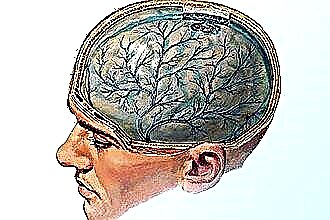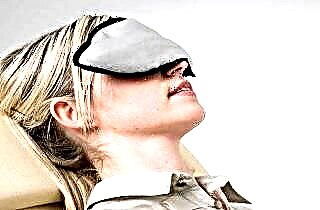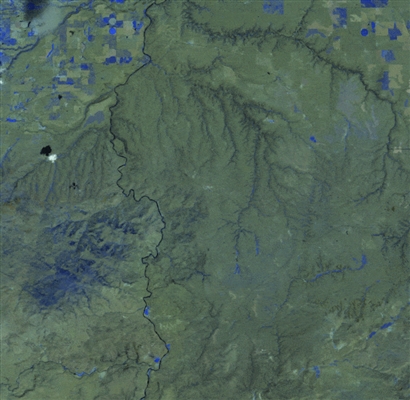Dilated cardiomyopathy (DCM) is a serious cardiac disease that causes disability as a result of severe enlargement of the chambers of the heart, which leads to impaired pumping of blood. With this disease, heart failure develops rather quickly, and it is often accompanied by such complications as arrhythmia and thromboembolism.
Epidemiology and incidence of the disease
DCM is the most common of all known cardiomyopathies. It occurs with a frequency of about 8 times per 100 thousand people. It mainly affects people aged 30-40 years, but there are also cases among young children and the elderly. Mostly men are ill (the ratio to women is 3-4: 1). Also, recent statistical studies have shown that in the population of the Negroid race, DCM occurs 2 times more often than in the representatives of the Caucasian.
Why pathology occurs, and what happens to the heart
DCM takes an intermediate position: it is something in between hereditary and acquired diseases. About a quarter (20 - 30%) of all cases are due to mutations in genes responsible for the formation of proteins in the muscle cytoskeleton of cardiomyocytes (dystrophin, laminin). They fasten all myocardial cells into a single whole, ensure the transmission of a nerve impulse, as well as a synchronous contraction of the entire heart muscle.
With insufficient formation of these proteins, gradual myocardial dystrophy develops - the transfer of excitation from one cell to another worsens, and a slow "weakening" of the heart as a pumping organ occurs. The genetic nature of dilated cardiomyopathy is confirmed by numerous cases among close relatives.
Hereditary DCM is also called primary or idiopathic. The acquired forms are called secondary. There are quite a few reasons for this type of disease, but two compete for the leading position: myocarditis and alcoholism.
Myocarditis
It is noteworthy that viruses play a large etiological role. The thing is that some of them, especially enteroviruses (Coxsackie A and B), in addition to direct damage to cardiomyocytes, are capable of triggering immunopathological processes. As a result, the body begins to produce anti-myocardial antibodies that attack the muscle cells of the heart. Many people suffer from viral myocarditis and do not even know about it - its characteristic signs are the appearance of aching or stabbing pains in the heart area, increased heart rate a week after a cold.
In the countries of South and Central America, the most common cause of myocarditis is Chagas disease, caused by the parasite trypanosome.
Alcoholism
With alcohol, not everything is as straightforward as it might seem at first glance. For example, until the 1960s, DCM was very common among long-term alcohol drinkers. Moreover, in the overwhelming majority of cases these were beer “lovers”. And, of course, at first it was alcohol that was attributed to the role of the cause of the development of DCM. After research, it turned out that the occurrence of pathology is associated with poisoning with heavy metals, namely cobalt, which was added to beer as a foam stabilizer. Currently, cobalt has not been used in the production of a drink for a long time.
Nevertheless, one should not completely deny the toxic effect of large doses of alcohol on the heart. It is still not completely clear whether the development of DCM is caused by the direct damaging effect of alcohol (or rather, its toxic metabolite, acetaldehyde) on the heart muscle, or whether the reason is insufficient absorption of vitamin B1 (thiamine) in the gastrointestinal tract in individuals for a long time. drinking alcohol.
More rare causes of dilated cardiomyopathy are as follows:
- endocrinological diseases - thyrotoxicosis, hypothyroidism, Itsenko-Cushing's syndrome / disease;
- the use of drugs - the anticancer drugs Doxorubicin, Daunorubicin have the strongest cardiotoxic effect;
- deficiency of nutrients - selenium, carnitine, vitamin D;
- heart damage in systemic diseases - lupus erythematosus, ankylosing spondylitis (ankylosing spondylitis), amyloidosis, vasculitis, etc.
The mechanism of development of the disease
As a result of the influence of various etiological factors, be it a genetic mutation or viral myocarditis, the chambers of the heart begin to expand. Muscle cells gradually die, being replaced by connective tissue, fibrosis develops. The heart becomes less elastic, it stretches worse in the diastole phase, due to which the ventricles are poorly filled with blood. The remaining tissue of the myocardium is compensatory hypertrophied, which ultimately leads to its degeneration and the development of heart failure. Parietal blood clots form in the dilated cardiac cavities of a patient with DCM.

Dilated cardiomyopathy in children
DCM in children ranks first among all cardiomyopathies. It occurs about 10 times less often than in adults (frequency - 0.5 per 100,000 people), boys are more likely to get sick. However, the predominant number of childhood cases of pathology develops as a result of genetic mutations and is much more severe, characterized by a higher frequency of deaths.
The main signs
Clinical symptoms of dilated cardiomyopathy consist of signs of chronic (congestive) heart failure (CHF) and cardiac arrhythmias:
- Dyspnea - This is the very first and most frequent symptom of DCM, which is associated with blood congestion in the vessels of the lungs. At the very beginning of the disease, it occurs only against the background of hard physical work, and with the progression of DCM, it appears during normal walking and even at rest. Shortness of breath increases at night due to horizontal position of the body and blood congestion in the lungs. Sometimes people who are sick wake up in the middle of the night choking, so they feel a little better sitting or standing.
- Arrhythmias. Heart palpitations are also an almost constant symptom of dilated cardiomyopathy. It can occur in seizures or run continuously. Sometimes the episode is accompanied by a rather sharp drop in blood pressure, which is why the patient begins to feel dizzy, nausea, a feeling of "faintness", he may even faint. Extraordinary contractions of the heart (extrasystoles) are perceived by the patient as a feeling of "interruptions", "rolling of the organ in the chest."
- General weakness. My DCM patients often complain of constant tiredness. They quickly get tired after seemingly habitual physical work.
- Severity or pain in the right hypochondrium. Often, due to an increase in the liver and congestion in it, patients experience aching discomfort in the right side under the rib.
- Swelling of the feetespecially the ankles, in the evening, which makes the shoes tight.
- Pain in the region of the heart. Aching or squeezing sensations of varying duration (from a few seconds to an hour) are characteristic. May occur during physical exertion or in an absolutely calm state.
The most dangerous complications of DCM are thromboembolism, which leads to stroke, pulmonary artery blockage (PE), and infarction of other organs. Sudden death from dilated cardiomyopathy is also common.It is caused by life-threatening heart rhythm disturbances: ventricular tachycardia, ventricular fibrillation, complete atrioventricular block.
How the diagnosis is made: studies and their criteria
To suspect a person with dilated cardiomyopathy, I carefully conduct a general examination. Using the percussion method, I determine the boundaries of the heart - I put one hand to the patient's chest and with the middle finger of the second hand I tap on the middle finger of the first, by sound, revealing the size of the organ. Due to the dilatation of the cardiac cavities in DCM, a dull sound has a much larger area than in a healthy person.
With auscultation of the heart, I can hear muffled sounds, a high heart rate (up to 100 - 120 beats per minute), a systolic murmur at the apex. In the later stages of the disease, an additional III tone appears between I and II, due to which a specific "gallop rhythm" arises, indicating severe damage to the heart muscle.
After that, in order to carry out a differential diagnosis with other diseases, I prescribe an additional examination, including:
- electrocardiography (ECG);
- chest x-ray;
- echocardiography (echocardiography, ultrasound of the heart);
- determination of cerebral natriuretic peptide (BNP, NT-proBNP) in the blood.
On the ECG film, I often find various cardiac arrhythmias: sinus, supraventricular or ventricular tachycardia, atrial fibrillation or flutter, atrioventricular conduction slowdown (AV block), atrial and ventricular extrasystoles. Since many arrhythmias are paroxysmal (paroxysmal), sometimes they cannot be "caught" during a normal recording, so I additionally prescribe a Holter (daily monitoring) ECG.
An x-ray clearly shows an enlarged heart (cardiomegaly), an increase in the vascular pattern due to stagnation of blood in the pulmonary vessels.
Echocardiography is the main method for diagnosing DCM. With its help, you can determine the exact size of the increase in each chamber of the heart, as well as measure the main indicator of the contractile (pumping) function of the myocardium - the fraction of the left ventricle.

With DCMP, the concentration of brain natriuretic peptide (BNP) and its precursor (NT-proBNP) is almost always increased. The first is secreted in the atria, it is involved in the regulation of the volume of circulating blood. With fluid retention in the vascular bed (which is what happens in heart failure), the atria stretch. In response to this, a natriuretic peptide begins to be secreted, which enhances the excretion of sodium in the urine, and with it excess fluid from the body leaves the body. The increase in this hormone correlates with the severity of heart failure.
BNP and NT pro BNP increases not only in DCM, but also in CHF of any origin. Instrumentally confirmed cardiomegaly and left ventricular ejection fraction below 45% are the main diagnostic criteria for DCM.
Treatment methods
Treatment for dilated cardiomyopathy is a multi-step process. The first points in it are limiting physical activity, reducing the consumption of table salt to 3 grams per day and completely eliminating alcohol. Without meeting these conditions, further therapy will be practically useless. Unfortunately, there are no medical treatments to completely get rid of this disease.
Surgical interventions used for DCM:
- Cardiac resynchronization therapy. Electrodes are installed in the right atrium and two ventricles, which supply nerve impulses, due to which the heart begins to contract more efficiently.
- Wrapping the heart in a CorCap bag. The ventricles are literally "wrapped" in an elastic mesh frame, which prevents pathological expansion of the heart, thereby preventing the progression of CHF. In some cases, this method even leads to the reverse development of the disease.
- Implantation of mechanical ventricles of the heart. A micropump is installed in the left ventricular cavity. This allows you to achieve an improvement in blood circulation throughout the body.
- Heart transplantation is the most radical treatment method to achieve complete recovery from DCM. This operation is performed on patients under 60 years of age with the failure of other types of therapy.
Also, for the prevention of sudden cardiac death in certain conditions, implantation of a cardioverter-defibrillator is performed. This is a special device that can immediately stop the emerging life-threatening heart rhythm disturbances. A promising direction in the treatment of DCM is stem cell transplantation, due to which the regeneration of muscle fibers occurs. This technique is still at the stage of clinical trials.
Patient support and symptom management
Now let's look at what drugs are used to combat the signs of DCM. Drug therapy has several directions:
- slowing the progression of CHF;
- treatment and prevention of cardiac arrhythmias;
- prevention of blood clots.
I use the following medications to treat heart failure:
- ACE inhibitors (Perindopril, Lisinopril) must be prescribed to all patients with CHF. These medicines improve cardiac contractility, but dry coughs can occur when taken. In this case, you need to replace it with sartans (Lozartan, Valsartan).
- Beta-blockers (Bisoprolol, Metoprolol) are also required medications. They slow down the heartbeat, so that the heart muscle "rests" more and better blood supply. But it is worth remembering that they are strictly contraindicated in case of complete AV block (III degree), which sometimes develops in patients with DCM.
- Potassium-sparing diuretics (Spironolactone) - these medications remove excess fluid from the body, which reduces the additional load on the myocardium.
- Diuretics (Torasemide, Hydrochlorothiazide) are used to remove fluid from the body.
For the treatment and prevention of rhythm disturbances, antiarrhythmic agents (Amiodarone, Sotalol) are prescribed. If the patient has atrial fibrillation, I sometimes use cardiac glycosides (Digoxin).
Average life expectancy
Dilated cardiomyopathy is a serious condition. The life expectancy of patients from the moment of onset of clinical signs ranges from 2 to 10 years, depending on the degree of progression. The main causes of death are chronic heart failure, thromboembolic complications, and sudden death from cardiac arrhythmias.



